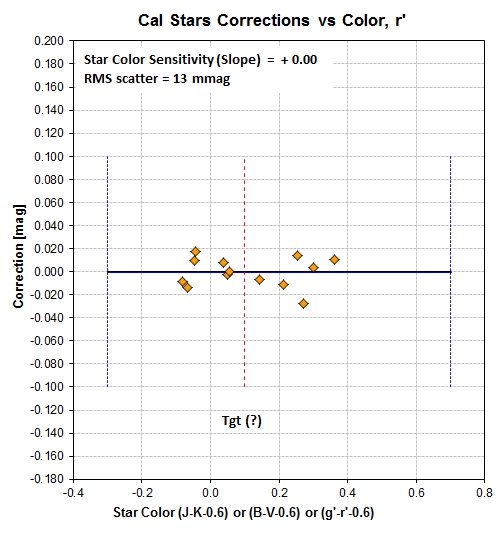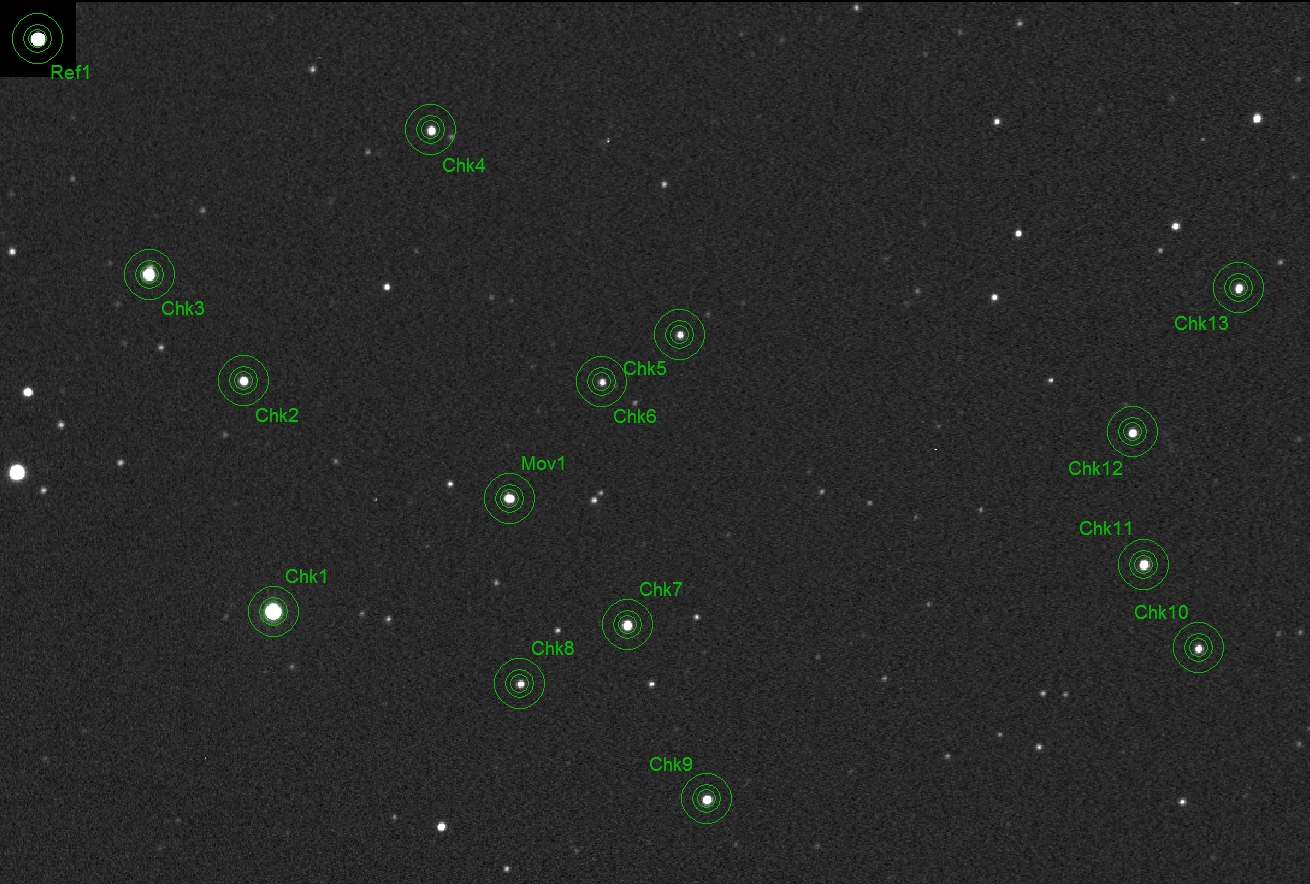
Figure 2. Comparison of calibration star magnitudes with a model fit versus star color.
This page provides details of how my observations of asteroid
285263 (1998 QE2) are processed.
Imaging
A Celestron 11-inch telescope (CPC 1100) is inside an 8-foot
dome. Two buried cables provide power and control functions,
respectively. The control room is inside my residence. All
hardware is controlled by MaxIm DL, v5.24. The observatory is
located in southern Arizona at west longitude = 110:14:16,
latitude = +31:27:08, elevation 1420 meters. I refer to it as HAO
(Hereford Arizona Observatory), and it has a MPC site designation
of G95.
The CCD is a SBIG ST-100XME. A 10-slot filter wheel includes
filters for bands BVRcIc, u'g'r'i'z' and Cb (clear with
blue-blocking). An autoguider chip (next to the main chip) is used
for autoguiding. The image scale is 0.605 "arc/pixel, which
provides a field-of-view (FOV) of 22.0 x 14.8 'arc. Binning is set
to 2x2. Exposure time is currently 15 seconds.
Image calibration includes use of master bias, dark and flat
frames. Hot and dead pixels are identified and corrected. Star
alignment is achieved using the "Auto - star matching" tool. An
artificial star is placed in the upper-left corner of each image.
Here's an example of two consecutive images:
MaxIm DL's photometry tool is used for creating a CSV-file with
magnitude readings of a set of images at one FOV location. The
photometry aperture radius is set to ~ 2 x FWHM [pixels], where
FWHM is the median of a sample of the images for a FOV location.
Typically FWHM ~ 3.5 pixels, so the photometry radius is typically
~ 7 pixels. A sky background annulus width of 9 pixels is adopted.
A gap width of 3 or 4 pixels is used.
The artificial star is used as a "reference star." Since its flux
is constant the fluxes of all star readings serve (during a later
phase of analysis) to establish atmospheric extinction (and rate
of change), as well as departures from a model extinction versus
time - that I refer to as "Extra Losses" (explained below).
Check stars are chosen on the basis of having SNR > ~100. The
check stars are candidates for use as reference (described below).
Here's an example of a choice of check stars:

Spreadsheet Processing
For each FOV location there is one CSV-file with photometry
readings (given as magnitudes) of the moving target (asteroid),
the artificial star (constant) and a dozen or more check stars.
This file is imported to a spreadsheet used to evaluate
suitability of the check stars for use as reference, and modeling
of atmospheric extinction and creation of a light curve.

Figure 2. Comparison of calibration star magnitudes
with a model fit versus star color.
The above graph shows that the flat field correction achieved an
accuracy across the FOV that is good to a few mmag. If, for
example, the flat field correction had a systematic error of 10
mmag near the FOV center half area, the calibration stars (found
throughout the FOV) would produce a component of scatter of ~ 20
mmag, which would add orthogonally to the APASS uncertainties and
the measurement uncertainties to produce an apparent RMS scatter
about a best fit that would be at least 20 mmag. The apparent RMS
scatter about the best fit is 13 mmag for this star field (N =
13).
![]()
Mosaic Flat Field Refinement
On June 18 I began a process of refining the flat field
correction using a matrix of empirically determined magnitude
corrections based on a set of 54 images of the same star with FOV
placements that cause the star to be observed at 54 locations
within the FOV. Initial results are described at another web
site: Mosaic Flat Field
Correction. This is a "work in progress" so I don't know if
the new procedure will be used to re-process any asteroid data.
Related Links
Asteroid
285263 Results
Individual Light Curves
HAO
Home Page
Mosaic Flat Field
Correction
____________________________________________________________________
WebMaster: B. Gary. Nothing on this web page is copyrighted. This site opened: 2013 May 29.